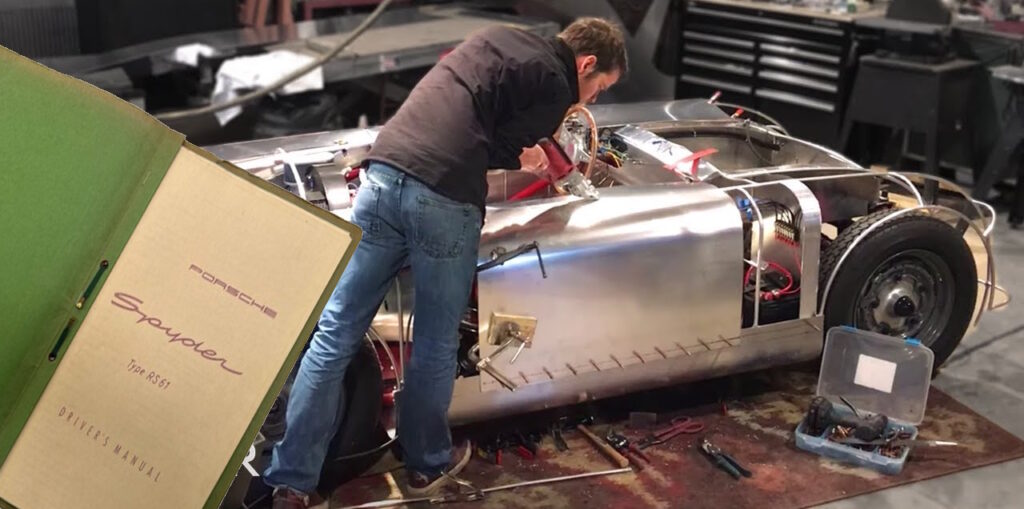
What if I told you that trying to build the Church using only the Bible is like trying to build a car using only the owner’s manual? That’s the real-world problem with sola scriptura—the idea that Scripture alone is sufficient to form and sustain the Church, without the help of tradition, history, or the early Christian witness.
Let’s break that down with something practical.
The Bible as the Owner’s Manual
An owner’s manual is incredibly useful—it tells you how to change your oil, where the transmission fluid goes, how to operate your vehicle day-to-day. But can it teach you how to build a car from scratch?
Of course not.
That’s what sola scriptura is like. The 66-book Bible is wonderful, inspired, and essential—but it’s not the blueprint for building the Church from the ground up. It’s the guide for living within the Church that already exists.
What About the Service Manual?
Now, let’s say you upgrade to the service manual—the big technical binder the mechanics use. That’s better. You’ve got diagrams, schematics, procedures, part numbers. If you know what you’re doing, you might actually take a car apart and put it back together.
This is like having the service manual instead of the owner’s manual. You’re getting deeper now—wiring diagrams, torque specs, detailed procedures. You’re starting to see how everything fits together.
This is what it’s like when you have the full canon of Scripture, the 73 books recognized by the early Church. The Council of Carthage in 397 AD affirmed this canon—not just 66 books, but the full set. At that time, there was no category called “the Apocrypha”—these books were simply Scripture. They were read, honored, and quoted in the Church from the beginning. You’re much closer to seeing the whole picture—but you’re still working from documents. You’re not yet standing in the factory.
The Designer’s Notes
Want to go deeper? Then you’d want the designer’s original notes—the behind-the-scenes sketches, the correspondence, the trial-and-error process. Now you’re seeing why the car was built the way it was. That’s the equivalent of the writings of the Church Fathers, the Didache, and the lived teachings of the early Christians. These were the ones discipled by the Apostles themselves.
But even then, it’s still second-hand. What if you could see the process in action?
Visit the Factory
What if there was a factory still building the same car—same parts, same methods, handed down from the original engineers, generation after generation? What if the workers were the great-great-great-grandchildren of the original builders, trained by their fathers, and their fathers before them?
That’s the Orthodox Church.
The Orthodox Church isn’t reinventing Christianity. It’s not modifying the design. It’s maintaining the Church Christ founded in 33 AD—preserved through unbroken apostolic succession, consistent worship, and unwavering doctrine. It’s not nostalgia; it’s continuity.
But Is That What People Really Want?
Let’s be honest. Most people today don’t want the original car.
They want cupholders. Heated seats. Bluetooth. Cruise control. They want a self-driving experience—convenience, comfort, autonomy. They want praise music blasting from every speaker, a TED Talk in stereo, and a full-color PowerPoint presentation tying it all together.
And that’s what sola scriptura often becomes: the freedom to worship how you want, believe what feels good, and design a religion tailored to personal preferences.
But if your faith is on autopilot… are you driving? Or is God?
Orthodoxy: The Original, Unchanged Church
The Orthodox Church teaches that no one has the right to change what God created. The Church is not ours to reimagine—it’s His. And He founded it with real people, in a real place, at a real time in history. That Church still exists, and it’s called Orthodox—from the Greek:
- Ortho = right or straight
- Doxy = belief or worship
It’s in the name.
The Bottom Line
If you’re using the Bible alone to build a church, you’re not building The Church—you’re building your church. A church of your own design.
And the Orthodox would say: that’s not orthodox.
